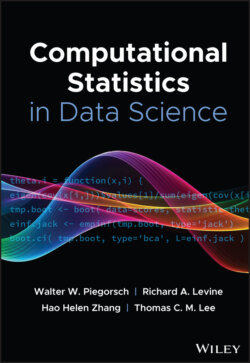Читать книгу Computational Statistics in Data Science - Группа авторов - Страница 46
3.1 BUGS/JAGS
ОглавлениеThe BUGS (Bayesian inference using Gibbs sampling) project led to some of the most popular general‐purpose Bayesian posterior sampling programs – WinBUGS [10] and, later, OpenBUGS, the open‐source equivalent. BUGS begin in 1989 in the MRC Biostatistics Unit, Cambridge University. The project in part led to a rapid expansion of applied Bayesian statistics due its pioneering timing, relative ease of use, and broad range of applicable models.
JAGS (Just Another Gibbs Sampler) [11] was developed as a cross‐platform engine for the BUGS modeling language. A secondary goal was to provide extensibility, allowing user‐specific functions, distributions, and sampling algorithms. The BUGS/JAGS approach to specifying probabilistic models has become standard in other related software (e.g., NIMBLE). Both BUGS and JAGS are still widely used and are well suited for tasks of small‐to‐medium complexity. However, for highly complex models and big data problems there are similar, more‐powerful Bayesian inference engines emerging, for example, STAN and Pyro (see Section 4 for more details).
